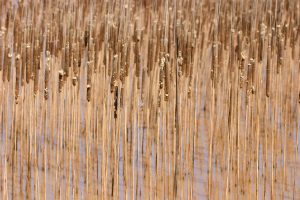The Unitarian Society, East Brunswick, NJ
March 12, 2017
This is our work, to discover what we can give. Isn’t this the purpose of [church], to learn the nature of your own gifts and how to use them for good in the world? (adapted from Robin Wall Kimmerer)
Robin Wall Kimmerer is a botanist who currently teaches Environmental and Forest Biology at the State University of New York. She is a citizen of the Potawatomi nation and a compelling storyteller. For the past month, I have been listening to book, Braiding Sweetgrass: Indigenous Wisdom, Scientific Knowledge and the Teachings of Plants.
There are many stories in the book. For instance, she describes a field trip — well, to be literal, it’s a marsh trip — with her students. Five weeks away from the wired world to transform the students to field biologists. As part of this annual expedition, they build a round house as their shelter and classroom.
They built it not from a kit that they have brought along, but from what was found there: starting with a frame made of bent saplings. The next step includes a “shopping” trip not to a home improvement big box retailer, but at the cattail marsh. Kimmerer does compare the cattail marsh to Walmart, but only in that “they both sprawl over acres of land.”
 After overcoming initial reticence, these budding field biologists come to see how much a cattail marsh has to offer:
After overcoming initial reticence, these budding field biologists come to see how much a cattail marsh has to offer:
- fibrous rhizomes that taste like a potato, edible roasted or as porridge or made into a flour;
- cattail leaves as an easy source for creating twine;
- at the bottom of many layers of leaves, a slimy substance that is antimicrobial, and soothes sunburn from a day of harvesting on the marsh;
- there’s spongy and waxy material, both serving the plant well, but also serving humans, providing superb water repellant and insulating material for a shelter, not to mention a softer ground upon which to sleep;
- under the leaves, and slime, and spongy material, and waxy outer coating, there is a white pith, sometimes called Cossacks’ asparagus, that tastes – so the book says — like cucumber.
This short list doesn’t even include that the cattails themselves can be dipped in fat and used as torches, or that their pollen can be captured as a source of protein. In the end, given all that they were able to find on their “shopping trip,” they don’t consider it a Walmart, but someone does joke that perhaps they have just been to the Walmarsh…
This is our work, to discover what we can give. Isn’t this the purpose of education, to learn the nature of your own gifts and how to use them for good in the world?
More and more, folks often choose their religious affiliation, rather than inherit it. Out of this, the notion of church shopping has emerged. For some, this is part of a temporary discernment process, having felt a spiritual longing or a yearning for community, you go “shopping,” visiting several congregations, perhaps even differing denominations, seeing what is on offer. Some people do it all their lives – never choosing one place to get their religious and spiritual needs met, never setting down roots, never making a commitment of reciprocity to one place.
But others – and I’m guessing many, if not most of you, are in this group – after process of discernment (that is what I would rather call it): you decide. You choose a place.
And now you are here, in your chosen spiritual home, done with your shopping. It is time to follow what Kimmerer calls the precepts of the Honorable Harvest:
- to take only what is given,
- to use it well,
- to be grateful for the gift, and
- to reciprocate the gift
These precepts are a sermon in and of themselves, perhaps even a whole small spiritual practice group, but today I want to just focus on the last one: reciprocate the gift.
Because that is what we are doing this morning: figuring out how we can reciprocate the gifts we have been given by this congregation; how to reciprocate the gifts being given in this moment — shared laughter, pride at seeing young people raised here give back, breaking bread – or pancakes – together, strengthening our sense of shared purpose; and how to reciprocate the gifts that will be given and received in the months, years, and hopefully decades, to come.
What in our shared life is the cattail torch that shines light in the darkness? Is it lighting our chalice? Or the words and music we share in this space we make holy by our gathering, week after week?
What is the slime factor? Maybe it’s different for each of us, but hopefully the discomfort of the slime is balanced by the relief of facing your fear, or tolerating discomfort, or growing your growing edge.
What is the surprising pith that after persistent peeling away of layers, then refreshing nourishment? Could that be being known as whole and holy, held in the embrace of this welcoming spiritual home?
It is up to us to recognize the gifts we receive here — ones we were looking for and ones that catch us by surprise, ones we welcome and ones we’d rather gift back – and then act on that last precept of the Honorable Harvest: reciprocate. Reciprocate in a variety of ways, like Kimmerer’s students with their creative ways to thank the cattail marsh for all it gave them.
But also in the very specific way that is our focus today: through financial stewardship, bound by a covenant of reciprocity, that ensures that The Unitarian Society not only survives, but thrives.
This is our work, to discover what we can give. Isn’t this the purpose of [church], to learn the nature of your own gifts and how to use them for good in the world?
Blessed be. May it be so.
